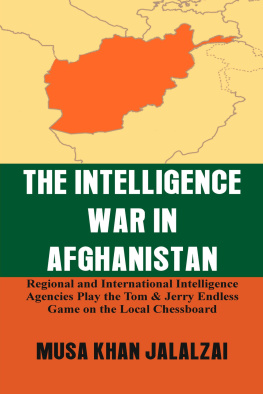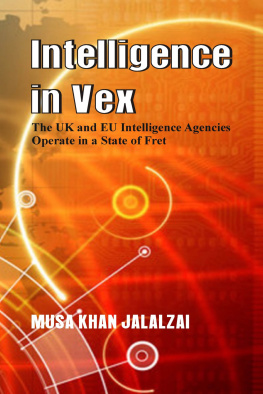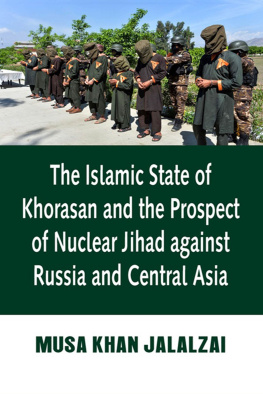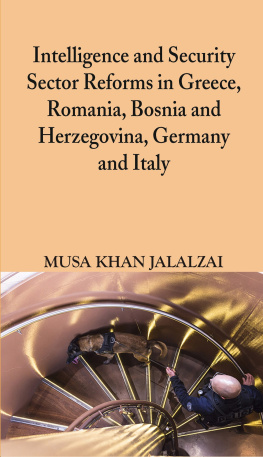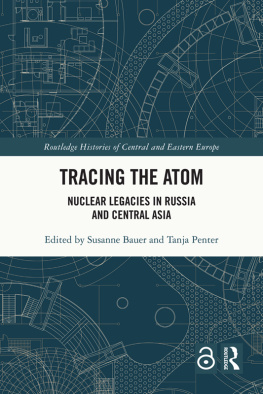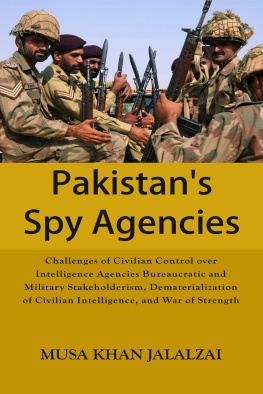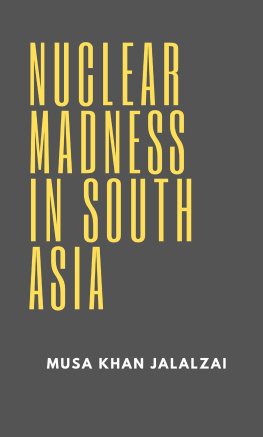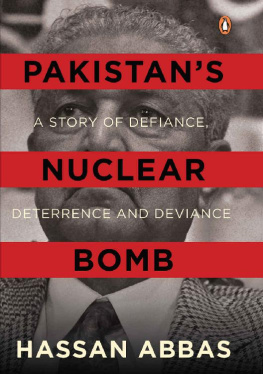Published by
Vij Books India Pvt Ltd
(Publishers, Distributors & Importers)
2/19, Ansari Road
Delhi 110 002
Phones: 91-11-43596460, 91-11-47340674
Mobile: 98110 94883
www.vijbooks.com
Copyright 2020, Author
ISBN: 978-93-89620-65-8 (Hardback)
ISBN: 978-93-89620-67-2 (ebook)
All rights reserved.
No part of this book may be reproduced, stored in a retrieval system, transmitted or utilised in any form or by any means, electronic, mechanical, photocopying, recording or otherwise, without the prior permission of the copyright owner. Application for such permission should be addressed to the publisher.
The return of terrorists from Syria Iraq and Libya is a new threat in Europe as these newly recruited jihadists know the constitution of dirty bomb and Nuclear Explosice Devices. Recent developments in Central Asia and the establishment of the ISIS networks in Caucasus region and Central Europe have put jihadisn and radicalization back on Russian and European security agenda. Russia and China have already questioned the threat of the existence of US biological weapons laboratories in Central Asia. The danger of nuclear terrorism is intensifying by the day. Recent military technological deployments in Russia and the United States, and Chinas possible nuclear test amid global fight against coronavirus have diverted the attention of nuclear and technology expert to the collateral damage of nuclear war in near future.
There is different perception that the future wars will wipeout some states and their geographycal and social stratification. Modern technologies are continuing to influence the nature of nuclear war. The worst-case scenario also cannot be ruled out as international concern over nuclear terrorism has grown in 2020, and this has driven a broad spectrum of efforts to strengthen nuclear security globally. Russia is a leading power in developing new military technologies, while President Vladimir Putin once said that modern equipment made up 82 percent of Russias nuclear triad: our equipment must be better than the worlds best if we want to come out as the winners.
Modern military technologies have changed effectiveness of operations in the battlefields. The use of some newly invented weapons in Afghanistan, Syria and Iraq added to the pain of civil society in Russia, Europe and the United States. The introduction and use of these technologies is understood as a series of qualitative changes in mobility of bigger armies. Security Forces have become technologically complex. Analysts Maxim Suchkov, Sim Tack (The Future of War, Valdai Discussion Club Report, August 2019) have noted some important aspects of modern future war and its impacts on modern society:
The evolution of technologies is the first and perhaps main element where public perceptions are concerned. However, with all their importance, technologies are only able to foster change in tandem with other components. Their emergence and subsequent introduction in the armed forces facilitates the development of relevant skills and capabilities, which in turn stimulate the emergence of new procedures to harness their potential. The political antagonisms of the modern world have reached a degree that is indeed alarming. No less destabilizing than the lowered pain threshold that used to guard against the use of force or wars between the states is the visible imbalance between the advancing technological warfare capabilities and the lack of practical experience in using these technologies. This is one of the reasons why the contours of a large-scale military clash between major or comparable powers5 are still unclear.......Nevertheless, significant changes are taking place on the tacticaloperational level, changes that must not be ignored if we want to form the correct idea of what war will be in the future. It is necessary to adapt these changes to the current varieties of warfare in order to minimize losses and achieve more success in military operations. Drones have fared better than anything else in this sense, being an effective tool for reducing personnel losses, accelerating operations, and raising the level of mission performance if handled by competent operators relying on accurate intelligence.
Recent warning of the Putin administration against the US low-yield nuclear weapon indicates that Russian forces are capable to destroy US Submarines in a short notice. On 29 April 2020; VoA reported reaction of Russian Foreign Ministry to the State Department paper that asserted that the low-yield weapons reduce the risk of nuclear war by reinforcing extended deterrence and assurance. Moreover, Federation of American Scientists warned (January 2020) that the U.S. Navy had deployed for the first time a submarine armed with a low-yield Trident nuclear warhead. The USS Tennessee deployed from Kings Bay Submarine Base in Georgia in 2019.
The W76-2 warhead, which is facing criticism at home and abroad, is estimated to have about a third of the explosive power of the atomic bomb the U.S. dropped on Hiroshima. Any attack involving a U.S. submarine-launched ballistic missile, regardless of its weapon specifications, would be perceived as a nuclear aggression, Russian Foreign Ministry warned. However, on 16 April 2020, Associated Press reported Chinese Foregn Ministry reponce to the allegations of U.S. State Department report about countrys secret nuclear test which is in violation of its international obligations.China has always performed its international obligations and commitments in a responsible manner, firmly upheld multilateralism, and actively carried out international cooperation, Foreiign Minister Spokeswoman said.
The Trump administration is in deep trouble since the test of Russias anti-satellite missiles, and its defeat in Afghanistan. NATO and the United States issued warning of Russian hybrid war against NATO and Europe, while they have destabilised Middle East and Central Asia and used nuclear and biological weapons in Iraq and Afghanistan. The Europeans are well aware of their security and friendship with Russia. For the first time, Europe has extended hand of cooperation to Russia due to the hegemonic attitude of the Trump administration. In this big strategic game, Russians and Americans have the same reason for modernizing their nuclear forces. In yesteryears, President Vladimir Putin developed modern weapons and restored the real Russian place in international community. Since Russia seized Crimea in 2014, the Russians have begun to build up basing sites for their advanced systems, including the Iskanders, but nuclear experts warned that if Russia deploys nuclear weapons there, it will spark complex problems. Analyst Scott Ritter (RT News, 28 April, 2020) highlighted the START and complication of US and Russias inventions of moder technologies and weapons, which will exacerbate the process of nuclear war preparations:
Both the US and Russia are engaged in the early stages of developing new strategic nuclear weapons to replace older systems. These weapons, which will cost trillions of dollars to develop and deploy, are with few exceptions still many years away from entering into service. A five-year extension of New START would provide both nations time to reach an agreement which responsibly addresses the need for strategic nuclear force modernization while continuing the past practice of seeking additional cuts in their respective nuclear arsenals...Chinas intransigence runs counter to the official US position, most recently articulated in a State Department report sent to Congress regarding Russian compliance with the New START Treaty. While the report finds that Russia is complying with its treaty obligations, the treaty does not cover enough Russian strategic systems, including several that have been previously announced by President Putin, and leaves China to operate with no restrictions in terms of the size and scope of its strategic nuclear arsenal.


